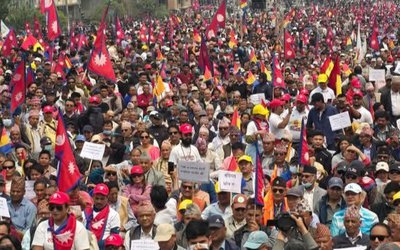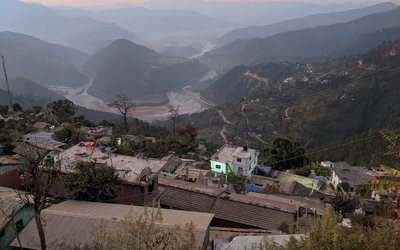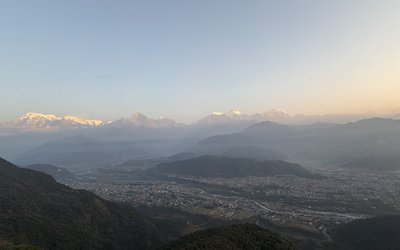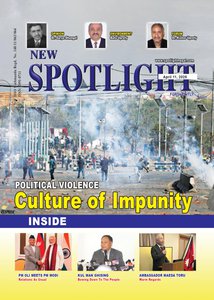Inclusive urban governance and infrastructure means a people-centered approach in which urban problems and opportunities are identified collaboratively in communities in partnership with community, government and private sector in order to ensure that 'no one is left behind' from the processes of development planning, decision making and the outcomes of urban development. Community engagement and equitable access to urban services, opportunities and built-up environment are, inter alia, at the core of inclusive governance and infrastructure. However, critical urban services such as water, sanitation, transport, energy and communications among many others and development outcomes are found to be disregarding the needs and existence of the urban poor, marginalized and disadvantaged population in the Global South including Nepal at least in four counts: quantity, quality, accessibility and affordability. These all interconnect and cross-cut one another. For example, let's talk about urban water. The story begins with 'quantity-availability' of water and then the quality of water available which means how many liters of water for one household or a person and the quality of water: whether the water available is clean enough to drink and use for other domestic usage? How easy or difficult it is to access water or is there a water-rationing system? What is the cost of water? Can all levels of household from rich to the poorest, from VIP zones to slums afford to buy the water to meet their daily needs? Does this water service including sanitation address the concerns of marginalized people and persons with disabilities (PWDs)?
The ground reality and scenario is different and far-removed. The traditional approach to increase critical urban services coverage of water, sanitation, transport, roads, building and other physical urban infrastructures have marginalized the needs of all citizens including the poorest and particularly the needs of PWDs. At crux, it can be said that NONE of the cities of Nepal are designed for people rather these are being manufactured for automobiles and short-term economic gains. For examples, look at some basics of urban road designs. Most of urban roads do not have pedestrians/sidewalks and if some have them, they are so narrow that people cannot walk. They are further encroached by plantations in the name of greening the city! Greening is important but thoughts must be given whether the sidewalks are made for people to walk or trees to be planted. If both, then the size of them must be designed accordingly. If good and sizable sidewalks are not made, crossings are not PWDs friendly, how do pedestrians walk and PWDs ride their wheelchairs and use roads safely? The existing realities are: roads exist however the pedestrian sidewalks are either narrow or do not exist and they are not at all wheelchair friendly and they do not use tactile paving for making them friendly to PWDs. In fact, even automobiles do not ply safely in Nepali roads due to failed and faulty designs! Now let's fact-check about another critical urban service—public transport system. The public experience of urban public transport is the worst in all counts: time, cost, access, and crowd and they prefer the least to use them and the sufferers are the ones who are not able to pay alternative modes of transport system. Now let's think about being a PWD—how accessible are public transports of Kathmandu or any other cities of Nepal for PWDs? None! Then, the question is why government, people and communities do not consider about marginalized people and PWDs when urban designs, infrastructures are planned and urban development actualized?
The Constitution of Nepal (2015) ensures rights to all citizens including the rights of PWDs for participation, equality and dignity. For examples, among many others, Article 16 ensures right to live dignified life; Article 18 ensures right to equality; Article 24 ensures right against untouchability and discrimination; and Article 42 ensures right to social justice and these all ensure rights of PWDs as well. In addition to constitutional rights, and building on them,The Rights of Persons with Disabilities Act of 2017was enacted to ensure the protection and promotion of the rights of individuals with disabilities. The Act envisions to provide PWDs access to basic services, human rights and opportunities in the areas such as education, health, employment and development among others which relate and automatically extend to all urban infrastructures. Yet, after having had all these key constitutional and legal foundations, urban development still holds very low level of inclusivity, especially in the context of rights of PWDs. Disability is often considered by Nepali society as charity and/or welfare issue and is not viewed as a human rights issue. Therefore, urban development and planning often do not include the voices of PWDs and when they do, they happened to be just a tokenistic approach resulting in almost all urban physical infrastructures, both public and private, sans PWDs friendly designs. As discussed above, the roads do not have sidewalks, both do not have tactile paving for visually impaired and unfriendly to wheelchairs. Public and even private transport systems almost entirely are inaccessible for PWDs, including boarding and descending from vehicle and seats. Public buildings and housings usually do not have ramps, or PWDs friendly lifts/elevators and toilets.
Now the question is what needs to be done to address these challenges. The first and foremost answer is to change the mindset of the society from considering disability as charity to disability as right base issue of human being. In addition to this, following measures, for minimum, need to be taken for making cities friendly to PWDs. The first action is to educate engineers, city planners, elites and the public about PWDs and their needs to live a dignified life. The second action is to design and mainstream PWDs pro policies which can actually be able to be implemented and actualized. The third action is to ensure PWDs active and meaningful participation in urban planning processes and decisions making. The fourth action is to ensure that all public infrastructures [housings, roads, hospitals, parks, toilets among others] are designed and built meeting the primary needs of PWDs. The fifth action is to ensure that transport systems are redesigned and adapted to meet the needs of PWDs. And once again with emphasis, work towards changing the mindset of Nepali society towards PWDs and let them live a dignified life.
Dr. Pandey is an Associate Professor in the Department of Development Studies, Kathmandu University. His works in the areas of public policy, climate change, urban governance, disaster risk reduction and development. He can be reached at: chandra.pandey@ku.edu.np
Ms. Niraula is Researcher in the Department of Development Studies, Kathmandu University. She works in the areas of urban governance, climate change and disaster. She can be reached at: prakriti.ith@gmail.com














